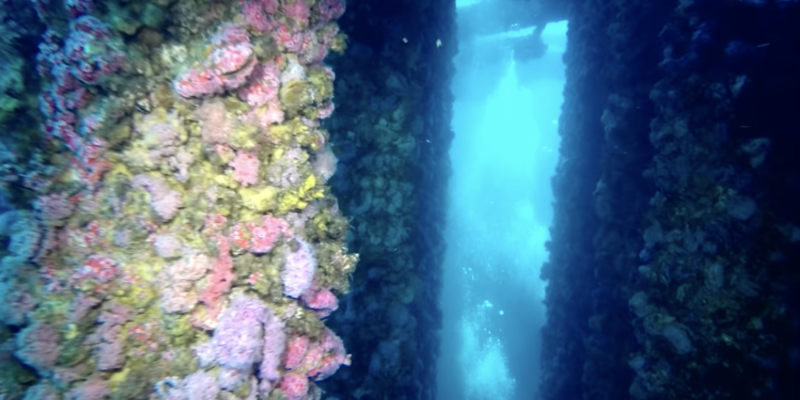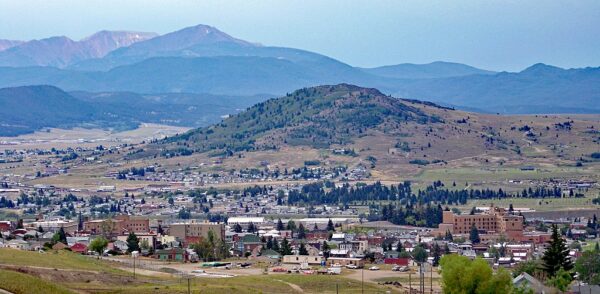
A researcher at the University of California-Santa Barbara, Ann Scarborough Bull was out in the ocean in August and couldn’t wait to see something that most people view with disdain. Two miles off the coast, the marine biologist and her colleagues were heading toward an abandoned oil platform, one that loomed in the horizon like a monument to some past civilization.
The Guardian writes, “The team wasn’t interested in the platform itself, but what lurked beneath. When they reached the ageing structure, named Holly, they lowered a car-sized remote- controlled vehicle under the waves.
There, they saw hundreds of thousands of juvenile rockfish finding shelter amid the hulking metal structure, alongside waving white anemones, clusters of mussels, and silver jack mackerel.
The seasoned marine biologists have been observing this remarkable spectacle for years. Holly, which was put out of use in 2015, is one of 27 oil rigs built off the coast of California decades ago that have become hotbeds of biological activity.
While not natural structures, their platforms have been embedded into the muddy seabed long enough to become part of the ocean environment, providing a home for creatures like mussels and barnacles, which in turn attract larger fish and sea lions that find safety and food there.
After two and a half decades of studying the rigs, Bull says it’s clear to her: “These places are extremely productive, both for commercial and recreational fisheries and for invertebrates.”
In February, Bull and her colleague published a review of rigs-to-reefs the journal Ocean and Coastal Management. Both researchers, writes ABC News, “have both worked in fish counting surveys, where divers descend between the surface and 100 feet, following a set path to count and estimate the length of every fish within two meters of themselves. Below that depth, the researchers used a two-person submarine to do a similar task: Go to the bottom — sometimes 1,200 feet down — and travel out on the sea floor up to 40 feet from the platform to count all the fish and estimate their size.
The method has been vetted over and over, and Love describes it as the ‘platinum standard’ for doing fish surveys. But it’s actually an underestimate, since the divers only look at what’s outside the structure, added Bull. ‘It’s a very conservative count,’ she said. ‘We know there are fish inside but we don’t count them.’
Surprisingly, researchers have found that fish are even more abundant on platforms than on natural reefs nearby, likely because there tends to be less fishing around the oil rigs. “It’s basically like a marine protected area,” said Bull. Along with juvenile fish, there is an abundance of invertebrates living on the platform — the steel is typically teeming with creatures like mussels, corals, oysters, crabs and shrimps. All that life squeezed onto the steel beams makes the structure slower to rust, adding to its longevity.
The level of productivity of these artificial habitats came as a shock to the researchers themselves. In 2014, they were part of a team that found that oil platforms off the California coast were among the most productive fish habitats anywhere in the world — including mangroves and coral reefs. Love recalls the four authors sitting around during a meeting when they calculated the results: “We looked at each other and went, what?” So they went back and ran the numbers again, only to come to the same conclusion.
People have been creating reefs for millennia: Artificial reefs were built from wood by Persians and Romans to block the entrance to harbors during wars. There are plenty of more recent examples as well. In 1994, 100 M-60 tanks sunk in the Gulf of Mexico off the coast of Alabama, and in 1999, the Louisiana Artificial Reef Program created the world’s largest artificial reef from the Freeport sulfur mine off Grand Isle, Louisiana. One retired rig off the coast of Borneo has even become a new hotel, with four-day dive packages starting at $819.”
These platforms are not without critics, however. Some say that the sight of these structures looming on the ocean’s horizon can be perceived as a form of pollution, potentially impacting the visual appeal of coastal regions. Moreover, they argue that repurposing these offshore rigs enables fossil fuel companies to sidestep the financial obligations associated with decommissioning. Environmental organizations stress the significance of restoring the marine environment to its natural condition, voicing apprehensions about the potential toxic waste remnants left behind when transforming these rigs into artificial reefs.
Taking a first do no harm approach, however, Bull disagrees, saying, “If you take away habitat, then there’s no going back. You would never allow the willful destruction of a kelp bed, or of a rocky reef, even though rigs have similar biodiversity.”
[Read More: Massive Solar Storm Shaped The World We Live In]










Sunken ships & idle oil rigs can support marine life worldwide